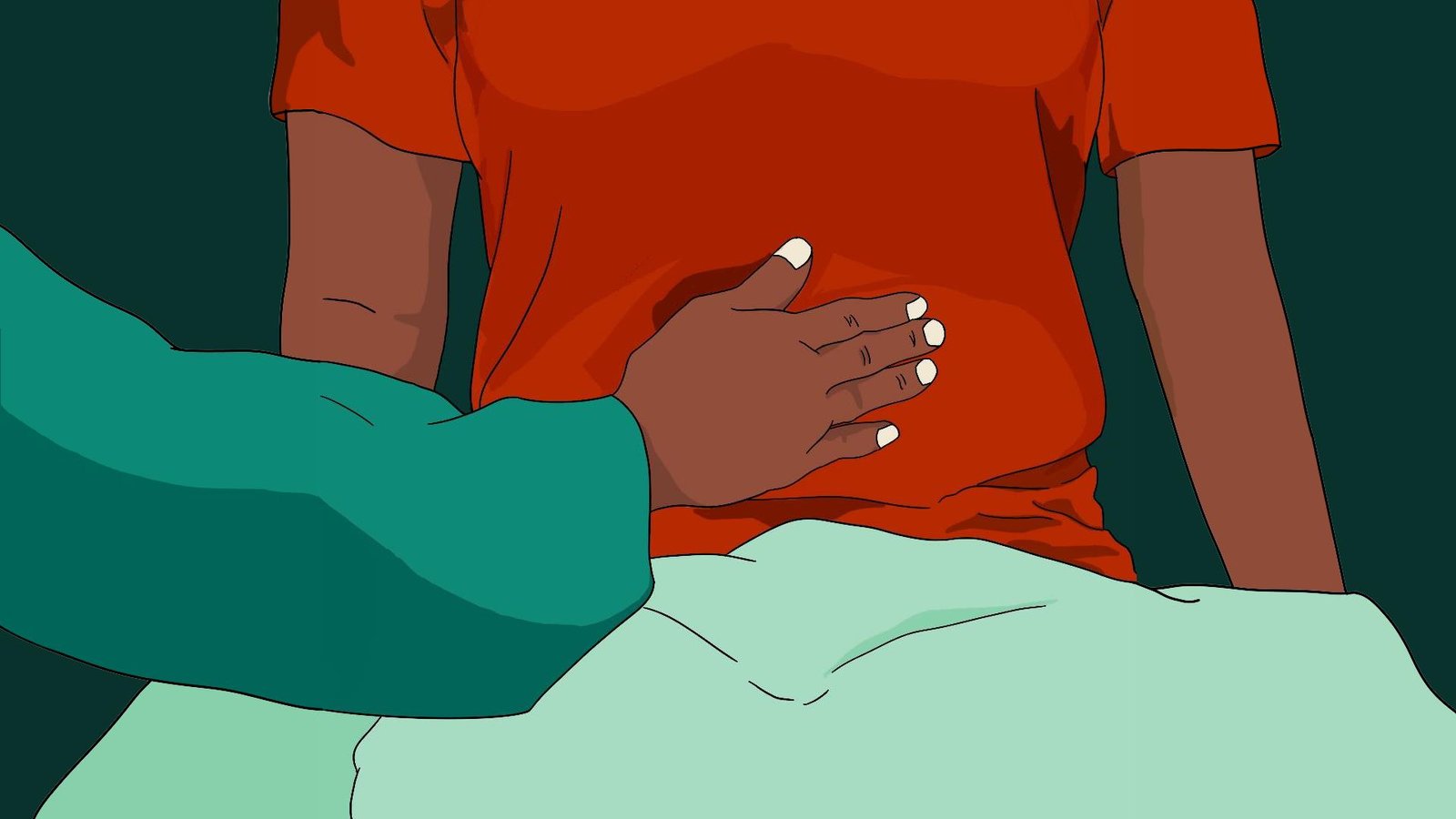🎧 Listen to: Fibroids

Fibroids
What are Fibroids?
Fibroids are non-cancerous growths that develop in or on a woman’s uterus (womb). Many women in Africa have fibroids, but because they often don’t show symptoms, some never realize they have them. However, for others, fibroids can cause severe pain, heavy menstrual bleeding, and even problems with pregnancy.
Studies show that 70% to 80% of African women will develop fibroids by the age of 50. The high prevalence in Africa may be linked to genetic factors, diet, and lifestyle. Yet, many myths surround this condition, leading to confusion and fear.
Different types of fibroids?
Fibroids come in different types, depending on where they grow in the uterus:
- Intramural fibroids: These are the most common type. They grow inside the muscular wall of the uterus and can make the womb expand.
- Subserosal fibroids: These grow on the outer layer of the uterus and can become very large, making a woman’s belly look swollen.
- Pedunculated fibroids: These fibroids are attached to the uterus by a thin stalk and can move around.
- Submucosal fibroids: These grow inside the inner layer of the uterus and often cause heavy bleeding and difficulty in getting pregnant.
What causes fibroids?
Doctors are not sure what exactly causes fibroids, but some factors increase the risk:
- Hormones: The female hormones estrogen and progesterone contribute to fibroid growth.
- Family history: If your mother, grandmother, or sister had fibroids, you are more likely to get them too.
- Pregnancy: The increased hormones during pregnancy can make fibroids grow larger.
- Age and weight: Women over 30 and those who are overweight have a higher risk of developing fibroids.
Myths and misconceptions about fibroids?
Many women believe that fibroids are caused by dirty or stagnant menstrual blood. This is not true. Fibroids are not caused by evil spirits or curses. Also, not all fibroids need to be removed. Many can be left alone if they are not causing problems.
Can a woman with fibroids get pregnant?
Yes, but fibroids can sometimes make it harder to conceive. If fibroids grow in certain parts of the uterus, they can block sperm from reaching the egg or prevent a fertilized egg from attaching to the womb. During pregnancy, fibroids can also cause complications like pain, early labor, or miscarriage. However, many women with fibroids still have healthy pregnancies.
Symptoms of fibroids?
Fibroids affect different women in different ways. Some women have no symptoms at all, while others may experience:
- Heavy or prolonged periods with blood clots
- Severe menstrual cramps
- Frequent urination (fibroids press on the bladder)
- Pain during sex
- Swelling in the lower belly
- Lower back pain
How are fibroids diagnosed?
If you suspect you have fibroids, visit a gynecologist (a doctor who specializes in women’s health). They will check your womb and may do one or more of these tests:
- Pelvic ultrasound: A scan to see the size and location of fibroids.
- Transvaginal ultrasound: A more detailed scan using a small device placed inside the vagina.
- Pelvic MRI: A test that provides a clearer image of fibroids.
How can fibroids be treated?
Treatment depends on the size and symptoms of the fibroids:
- Dietary changes: Avoid fatty meats and high-calorie foods. Eat more vegetables, green tea, and fish like tuna or salmon.
- Medication: Some medicines help control heavy bleeding and pain but do not shrink fibroids.
- Hormonal treatment: Birth control pills or an intrauterine device (IUD) that releases hormones can help manage symptoms.
- Surgery: If fibroids are large or cause severe problems, doctors may perform:
- Myomectomy: Removes fibroids but keeps the uterus intact.
- Hysterectomy: Removes the uterus completely (only for women who do not want more children).
Can fibroids be prevented?
There is no guaranteed way to prevent fibroids, but you can reduce your risk by:
- Maintaining a healthy weight
- Eating a balanced diet rich in fruits and vegetables
- Managing stress levels
- Exercising regularly Conclusion?
Fibroids are common, especially among African women. While they can cause discomfort and complications, they are not life-threatening. Understanding fibroids and seeking early medical attention can help women manage the condition effectively. If you experience any symptoms, visit a doctor to get checked and receive proper treatment.
